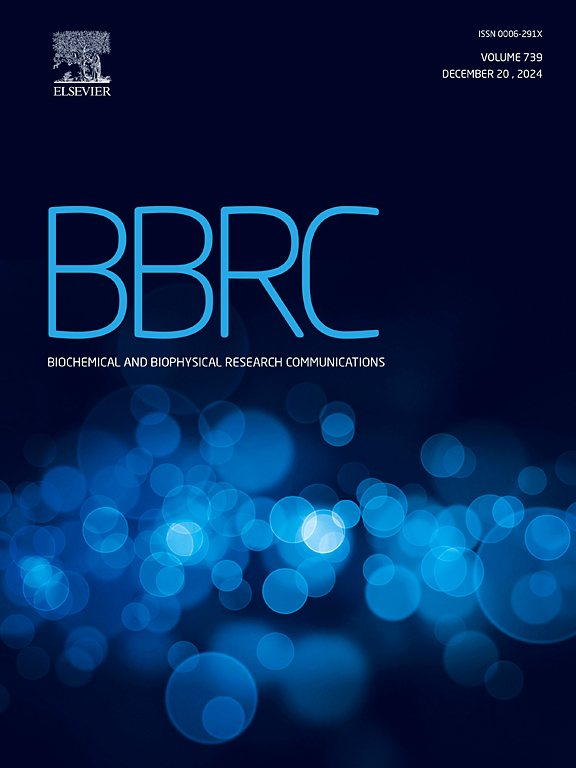Oxidation of active site cysteine leads to inactivation of peptide deformylase from Salmonella enterica
IF 2.5
3区 生物学
Q3 BIOCHEMISTRY & MOLECULAR BIOLOGY
Biochemical and biophysical research communications
Pub Date : 2025-03-20
DOI:10.1016/j.bbrc.2025.151675
引用次数: 0
Abstract
Peptide deformylase (PDF) is an essential bacterial enzyme involved in first step of N-methionine excision (NME) pathway during bacterial protein synthesis. In first step of NME, N-formyl group of nascent polypeptide chains is removed by PDF. PDF is a metallo-protease where metal cofactor is co-ordinated to a Cys and two His residues. We cloned and expressed this iron containing metallo-protease from Salmonella typhimurium (sPDF). We characterized the sPDF which is a mononuclear iron containing enzyme that displayed optimal in vitro activity in the presence of oxidation preventing agent like catalase. To have an insight into the role of metal ion in catalase dependent enzyme activity, we generated surrogate sPDF-Ni2+ and sPDF-Co2+. Interestingly, these proteins also showed catalase requirement for optimum enzyme activity. Thus our results argue the presence of the target (amino acid) of oxidation in the protein itself that might be crucial for the activity of the enzyme. To ascertain this aspect, we examined the oxidation status of active site cysteine of sPDF by mass spectrometry. Our results indicated that the direct oxidation/over-oxidation of active site cysteine is responsible for inactivation of sPDF protein. Furthermore, a comparison of PDF sequences from Gram-negative bacteria revealed the presence of this cysteine throughout the lineage. Thus, our results per se are indicative of a similar behaviour of all these Gram-negative peptide deformylase proteins.
求助全文
约1分钟内获得全文
求助全文
来源期刊
CiteScore
6.10
自引率
0.00%
发文量
1400
审稿时长
14 days
期刊介绍:
Biochemical and Biophysical Research Communications is the premier international journal devoted to the very rapid dissemination of timely and significant experimental results in diverse fields of biological research. The development of the "Breakthroughs and Views" section brings the minireview format to the journal, and issues often contain collections of special interest manuscripts. BBRC is published weekly (52 issues/year).Research Areas now include: Biochemistry; biophysics; cell biology; developmental biology; immunology
; molecular biology; neurobiology; plant biology and proteomics

 求助内容:
求助内容: 应助结果提醒方式:
应助结果提醒方式:


